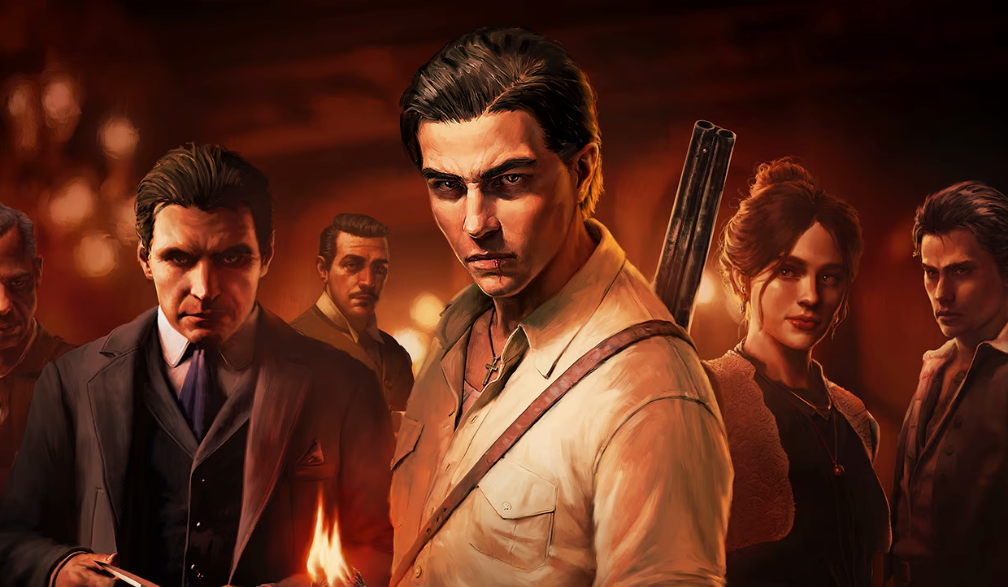## Hold Your Horses, Gamers: Take-Two Breaks the $80 Game Mold!
$80 for a new AAA title? It’s becoming the new normal, leaving wallets weeping and gamers scrambling for alternatives. But hold onto your hats, folks, because Take-Two Interactive just threw a curveball our way. While the industry seems hell-bent on charging a king’s ransom for their latest releases, Take-Two has surprised us all by setting a $50 price tag on their upcoming gangster epic, Mafia: The Old Country.

Take-Two’s Evasive Maneuvers: Focusing on “Value” Over Price Point
Amidst growing industry speculation about the potential for $80 games, Take-Two Interactive, the parent company of Rockstar Games and 2K Games, has opted for a strategic dance around the issue. In a recent earnings call, CEO Strauss Zelnick emphasized a focus on “value” rather than a fixed price point. While this doesn’t definitively answer whether titles like the highly anticipated Grand Theft Auto VI will command a higher price tag, it does signal a potential shift in the industry’s conversation about pricing.
Zelnick’s stance underscores the complexities surrounding the “value proposition” in gaming. It’s a calculated move to deflect direct questions about $80 pricing while subtly positioning Take-Two’s approach as consumer-centric. The company’s argument revolves around delivering a substantial amount of content, features, and gameplay hours that justify the cost, regardless of the specific figure.
Rockstar’s Autonomy: Setting the Price for Its Flagship Title
Adding another layer to this narrative, Zelnick clarified that individual labels within Take-Two, including Rockstar Games, retain the autonomy to set their own prices. This suggests that Rockstar, known for its sprawling open-world experiences, may indeed choose to price GTA VI at a premium, considering the anticipated scope and development costs.
The historical precedent for variable pricing in gaming supports this notion. Zelnick pointed out that different game genres, platforms, and development budgets have always resulted in varied price points. The introduction of digital distribution and microtransactions further blurred these lines, allowing for more flexible pricing models.
Mafia: The Old Country: A $50 Counterpoint
2K’s Strategy: Prioritizing Accessibility and Reach
Interestingly, 2K Games, another Take-Two label, has chosen a different path with its upcoming title, Mafia: The Old Country. While some of 2K’s other releases might command a higher price, Mafia: The Old Country is launching at $50. This strategic decision reflects 2K’s emphasis on accessibility and maximizing the game’s reach.
The Game’s Scope and Design: A More Focused Experience
2K’s rationale for the $50 price point is tied to the game’s design philosophy. Unlike sprawling open-world titles like Grand Theft Auto V, Mafia: The Old Country takes a more focused approach. It’s not an open-world adventure but a narrative-driven experience with a defined scope and a shorter playtime commitment.
Implications for Future 2K Games: A Potential Price Tiering System?
This divergence in pricing strategies for 2K games raises intriguing questions about the future of pricing tiers within Take-Two. Could we see a more structured approach where different game types or genres are priced accordingly? This could potentially offer consumers greater flexibility and value based on their individual gaming preferences and budgets.
The Value Debate: More Than Just a Number
Content, Longevity, and Innovation: What Constitutes Value in Gaming?
The debate about $80 games ultimately boils down to a complex definition of “value” in the gaming industry. While price is a significant factor, it’s not the sole determinant of a game’s worth. Content volume, gameplay depth, longevity, innovation, and overall player satisfaction all contribute to the perceived value proposition.
Gamers are increasingly discerning and demanding. They expect not only high-quality gameplay but also compelling narratives, engaging multiplayer modes, and continuous post-launch support in the form of updates, expansions, and downloadable content.
The Role of Marketing and Hype: Influencing Perceptions of Worth
Marketing and hype also play a crucial role in shaping consumer perceptions of value. A game heavily promoted and anticipated, such as a new Grand Theft Auto installment, might justify a higher price tag simply due to the expected market demand and cultural impact.
However, this raises concerns about price inflation driven by hype rather than actual game content or innovation. Gamers need to critically evaluate marketing claims and assess the true value offered by a game before making a purchase decision.
A Shift in Consumption: The Rise of Game Pass and Free-to-Play
The evolving gaming landscape, with the rise of subscription services like Xbox Game Pass and the prevalence of free-to-play models, further complicates the value debate. Game Pass provides access to a vast library of games for a monthly fee, challenging the traditional notion of purchasing individual titles.
Free-to-play games, while often supported by in-app purchases, offer a barrier-to-entry that allows a wider audience to engage with gaming. This trend suggests a potential shift in consumer expectations regarding pricing and content accessibility.
Conclusion
So, there you have it. Take-Two, while acknowledging the industry-wide trend of $80 games, has chosen a different path with Mafia: The Old Country. They argue that this title’s $50 price point reflects its unique development challenges and shorter playtime compared to their AAA behemoths. While this decision might be a strategic play to attract budget-conscious players and differentiate themselves in a crowded market, it also raises crucial questions about the future of pricing in gaming.
Ultimately, Take-Two’s gamble on Mafia: The Old Country could signal a shift in the industry landscape. Will other publishers follow suit, recognizing that not every game needs to command a premium price? Or will $80 become the new normal, forcing players to choose between their wallets and the latest releases? The coming months will be telling as we see how consumers react to this pricing strategy and whether it sets a precedent for the future of gaming. One thing is certain: the conversation about game prices is only just beginning.
Are we witnessing a rebellion against the rising tide of exorbitant prices, or is this a temporary anomaly? Only time will tell, but the future of gaming hangs in the balance.